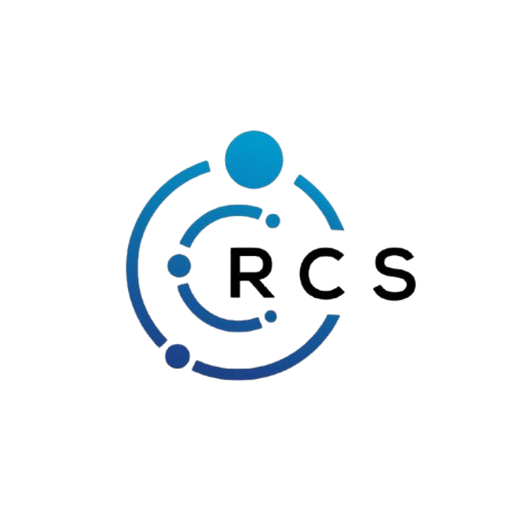In today’s digital age, software is the backbone of business operations, personal productivity, and technological innovation. Every year, new tools are introduced that aim to solve problems more quickly, efficiently, and with improved user experiences. Among the latest innovations, the new software name 8tshare6a has begun to gain attention. While the name may seem unusual, this software represents a fresh approach to utilizing digital tools for data management, collaboration, and automation.
This article provides a detailed guide and complete explanation of what the software represents, how it works, and why it matters. We will explore its potential use cases, its benefits, how to get started, and even its limitations so that you can develop a holistic understanding of the tool.
1. Introduction to Modern Software Trends
To understand the importance of any new software, it is necessary to first recognize the trends shaping the software industry today:
-
Automation and AI Integration: Most new tools leverage artificial intelligence or machine learning to reduce manual work.
-
Cloud-Based Solutions: Cloud platforms dominate because they are accessible from anywhere and don’t require heavy infrastructure.
-
User-Centric Design: The success of new software often depends on how intuitive and user-friendly it is.
-
Collaboration Features: With remote work rising, tools that enable real-time teamwork are in demand.
-
Security and Privacy: As cyber threats grow, secure software is now a priority for both companies and individuals.
The new software we are analyzing fits into this larger movement and provides insight into how next-generation applications are evolving.
2. What Is the New Software Name 8tshare6a?
The new software name 8tshare6a is an emerging platform that combines data sharing, secure file management, and collaborative tools in one ecosystem. While details about its deeper architecture are still being studied, the software aims to streamline how businesses handle digital resources.
Key highlights include:
-
Centralized File Management: A single hub for storing, categorizing, and accessing files.
-
Smart Automation: Processes such as file sorting, permissions, and synchronization are automated.
-
Cross-Device Access: Works across desktops, smartphones, and tablets.
-
Enhanced Security: Focus on encryption and role-based access control.
This type of software is especially useful for companies that manage a large amount of digital content and require reliable sharing tools that keep data safe while ensuring accessibility.
3. Why Does It Matter?
When evaluating why a new software solution is relevant, three factors stand out:
-
Efficiency: The ability to save time and reduce redundant tasks.
-
Scalability: Whether the software can grow with a business or adapt to personal needs.
-
Cost-Effectiveness: Delivering value without overburdening budgets.
The new software fits well within these criteria. In practice, it may reduce dependency on multiple apps by combining functionalities, which translates into smoother workflows and fewer integration headaches.
4. Core Features of the Software
Every piece of software rises or falls based on its features. Below is a closer look at what the new tool offers:
4.1. File Sharing and Collaboration
The software allows seamless file exchange between teams with real-time updates. Changes made to a document are instantly visible, reducing miscommunication.
4.2. Cloud Synchronization
Users can start work on one device and continue on another without interruption. This is particularly useful for remote and hybrid teams.
4.3. Data Encryption
Advanced encryption protocols ensure files remain protected both at rest and during transmission.
4.4. Role-Based Access
Team leaders can assign permissions, ensuring only the right people have access to sensitive data.
4.5. Automation Tools
Repetitive tasks such as version control, backup scheduling, and data tagging are automated.
4.6. Integration Options
The software supports integration with email clients, CRMs, and productivity suites, creating a centralized digital environment.
5. Practical Use Cases
Let’s explore how individuals and businesses might apply the software in real-world scenarios:
-
Small Businesses: Store contracts, invoices, and reports in one secure hub.
-
Remote Teams: Share design files, documents, and updates in real time.
-
Educational Institutions: Distribute course materials, assignments, and lecture notes to students.
-
Healthcare Providers: Safely store and share patient files under strict security protocols.
-
Freelancers: Organize client projects and deliverables without juggling multiple tools.
6. Step-by-Step Guide to Getting Started
Step 1: Installation or Account Setup
Depending on the deployment, users either download a desktop client or register for a cloud-based account.
Step 2: Initial Configuration
-
Create folders and categories.
-
Define access permissions.
-
Sync with existing productivity tools.
Step 3: Uploading Files
Drag and drop files or connect cloud storage for bulk import.
Step 4: Inviting Team Members
Send secure invitations with customized permissions.
Step 5: Automating Processes
Activate automation features such as automatic backups or file categorization.
Step 6: Monitoring Usage
Check the dashboard for storage use, active users, and activity logs.
7. Benefits of Using the Software
7.1. Increased Productivity
By consolidating multiple functions, users save time switching between apps.
7.2. Better Security
Encryption and access control protect sensitive data.
7.3. Reduced Costs
Instead of paying for separate apps for storage, sharing, and collaboration, everything is integrated.
7.4. Scalability
Works well for individuals and scales smoothly for organizations with hundreds of users.
7.5. Simplified Workflows
Automation ensures repetitive tasks are handled without constant human input.
8. Limitations and Challenges
Even the most advanced software has limitations. Possible challenges include:
-
Learning Curve: New users may need training to fully utilize advanced features.
-
Compatibility Issues: Integration with legacy systems might not always be seamless.
-
Pricing Models: Advanced features may require premium subscriptions.
-
Dependence on Internet Connectivity: Cloud-based use means downtime if connectivity is lost.
9. Future Outlook
Given industry trends, tools like this are expected to evolve further with:
-
AI-Powered Automation: More intelligent decision-making in organizing and categorizing data.
-
Deeper Integrations: Linking with advanced analytics tools and enterprise systems.
-
Customizability: Allowing users to build workflows unique to their needs.
-
Sustainability: Optimized storage that reduces digital carbon footprints.
10. Conclusion
The software industry is continuously reshaped by innovation, and the new software name 8tshare6a is an example of how companies are moving toward unified platforms that combine security, productivity, and collaboration. Whether you are a business professional, an educator, a freelancer, or part of a large organization, this tool provides a robust way to manage and share information effectively.
By centralizing processes, automating routine tasks, and ensuring strong data protection, it offers a glimpse into the future of software solutions. While no tool is without challenges, this new software demonstrates how digital systems are becoming smarter, faster, and more essential for everyday work. See more

